Abstract
Vernal keratoconjunctivitis (VKC) is usually considered as an allergic eye disorder of type I, and in most therapeutic trials it has been shown to yield to topical treatment with sodium cromoglycate. This has been confirmed in the present study of VKC patients from Israel. However, some of the cases seemed not to benefit from this treatment. In a survey of IgE levels in VKC patients in Israel tear IgE levels were significantly increased in 63.5%, but in 29% of the patients both tear and blood IgE levels were normal to low. The possibility that some of the cases diagnosed as VKC might have another cause than IgE-mediated atopy is discussed.
Full text
PDF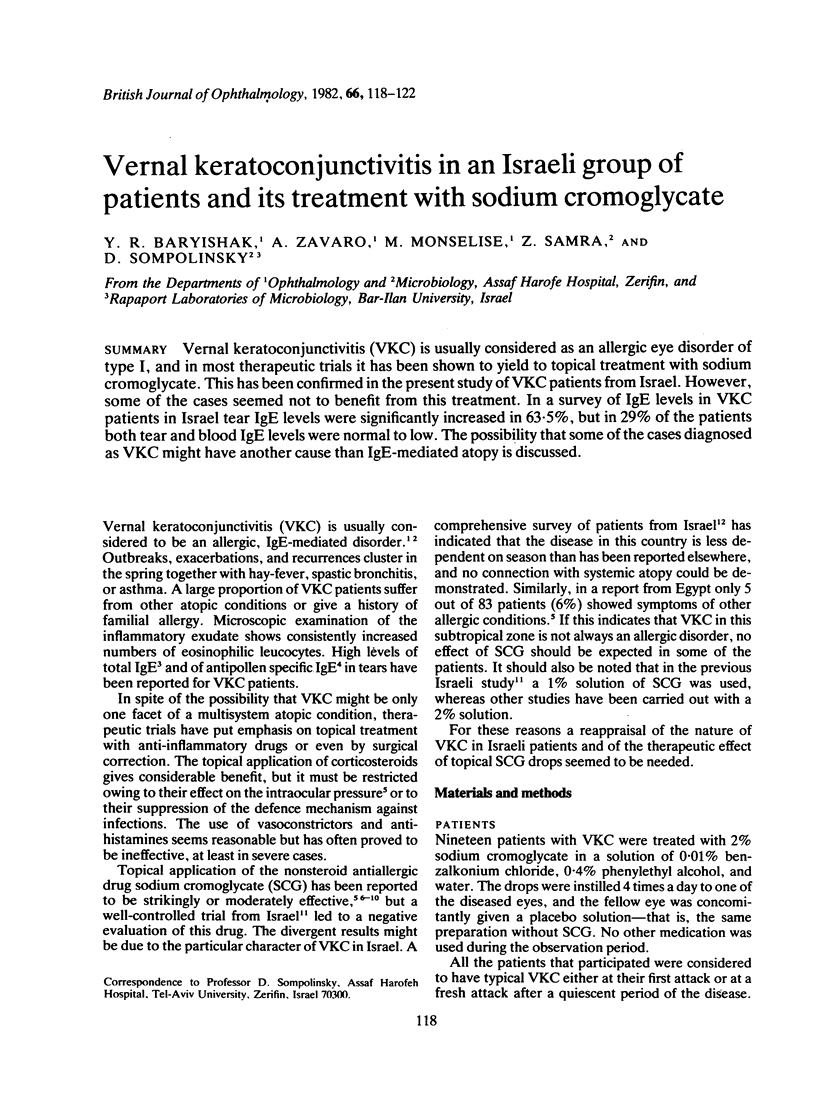
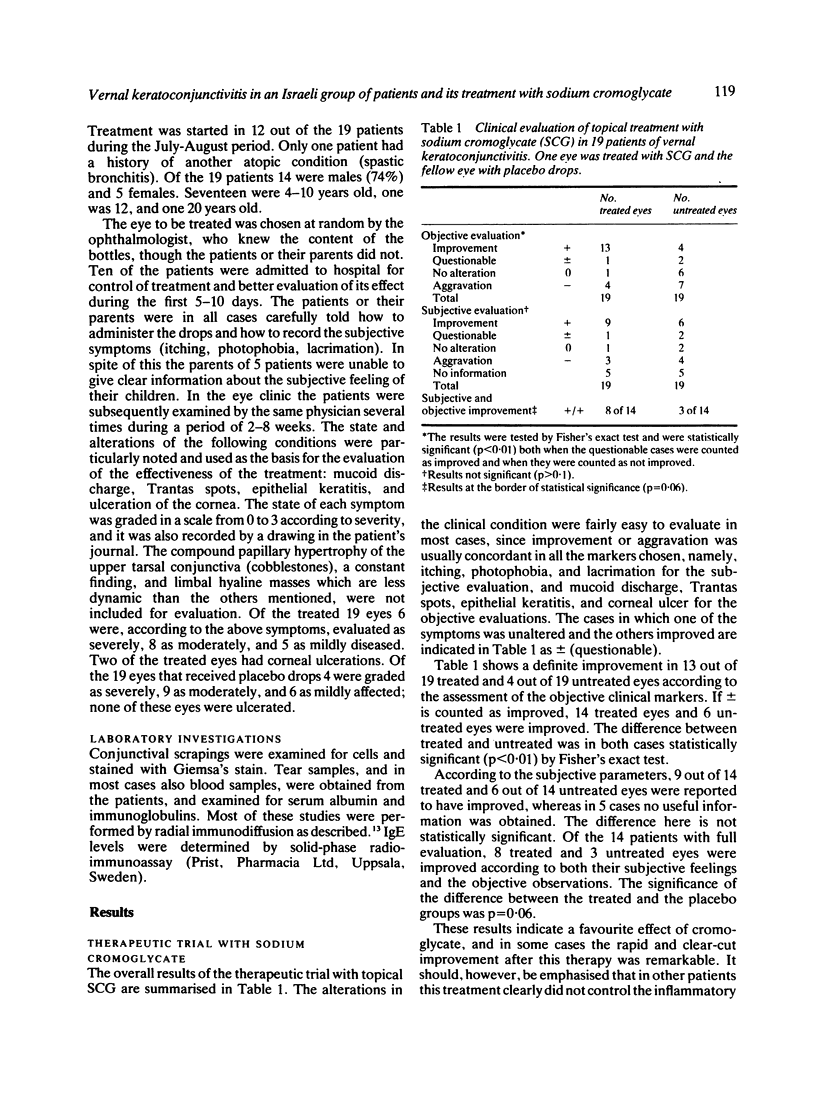
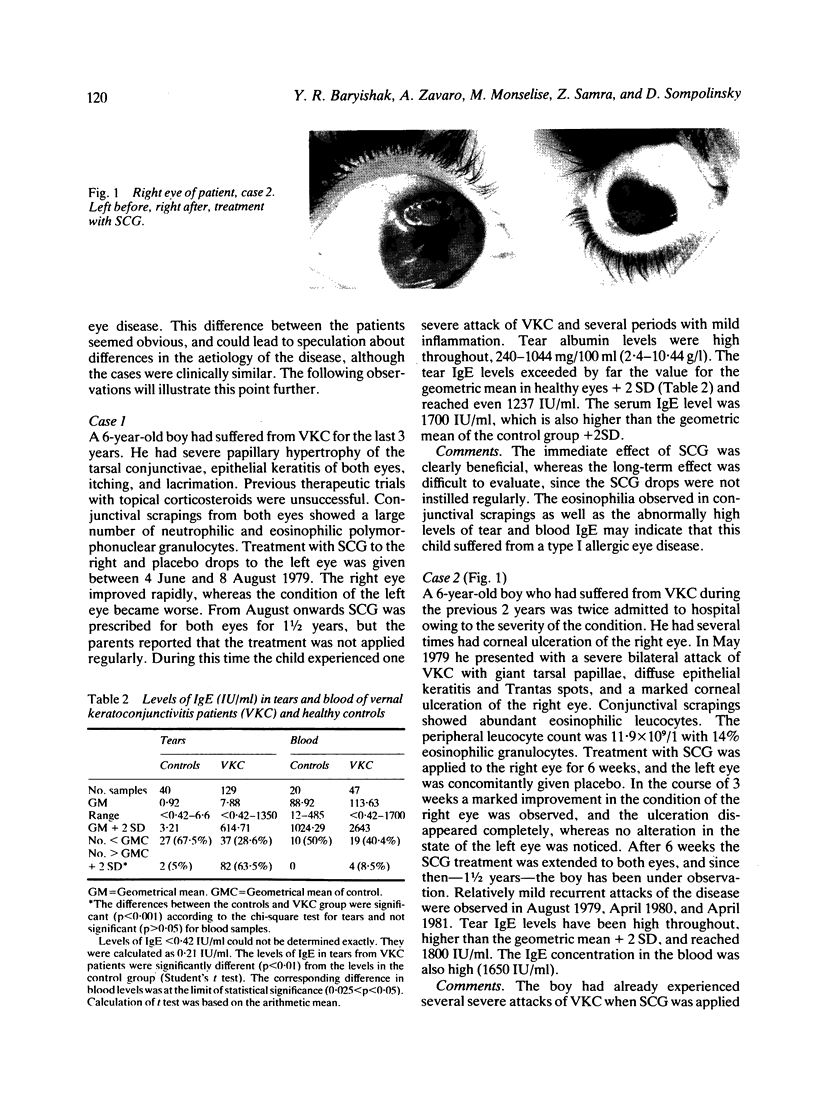
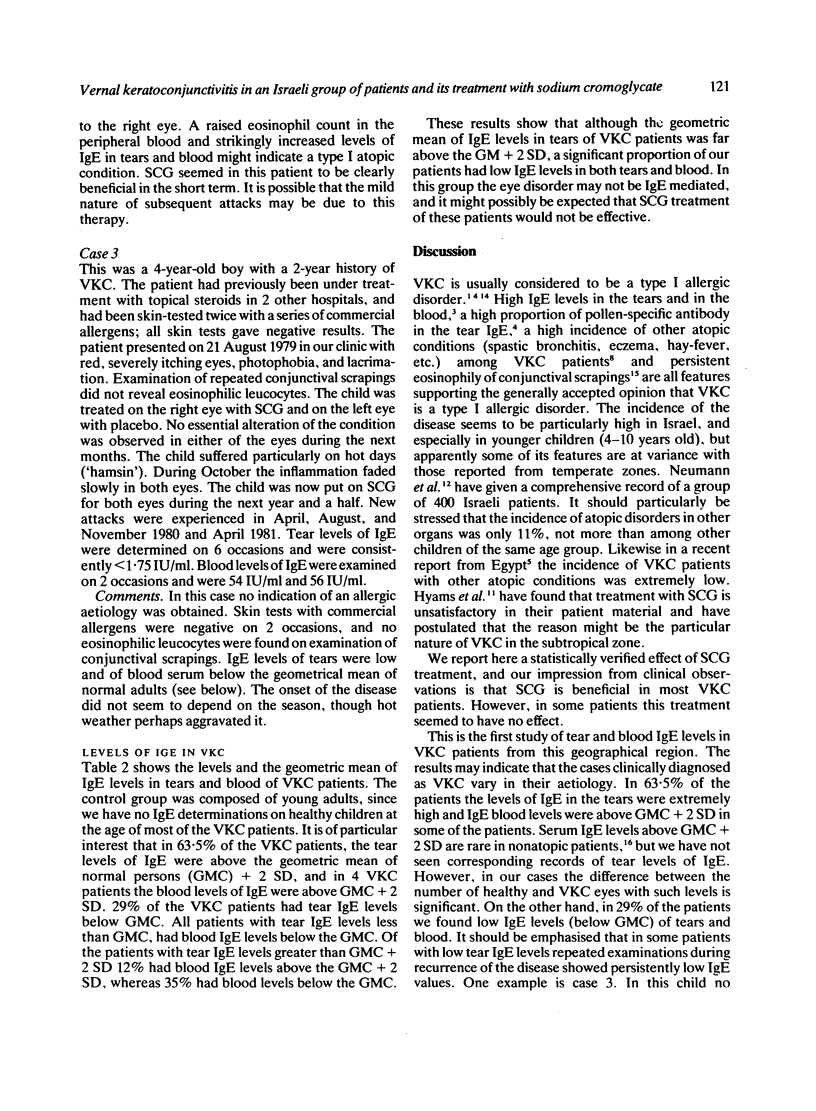
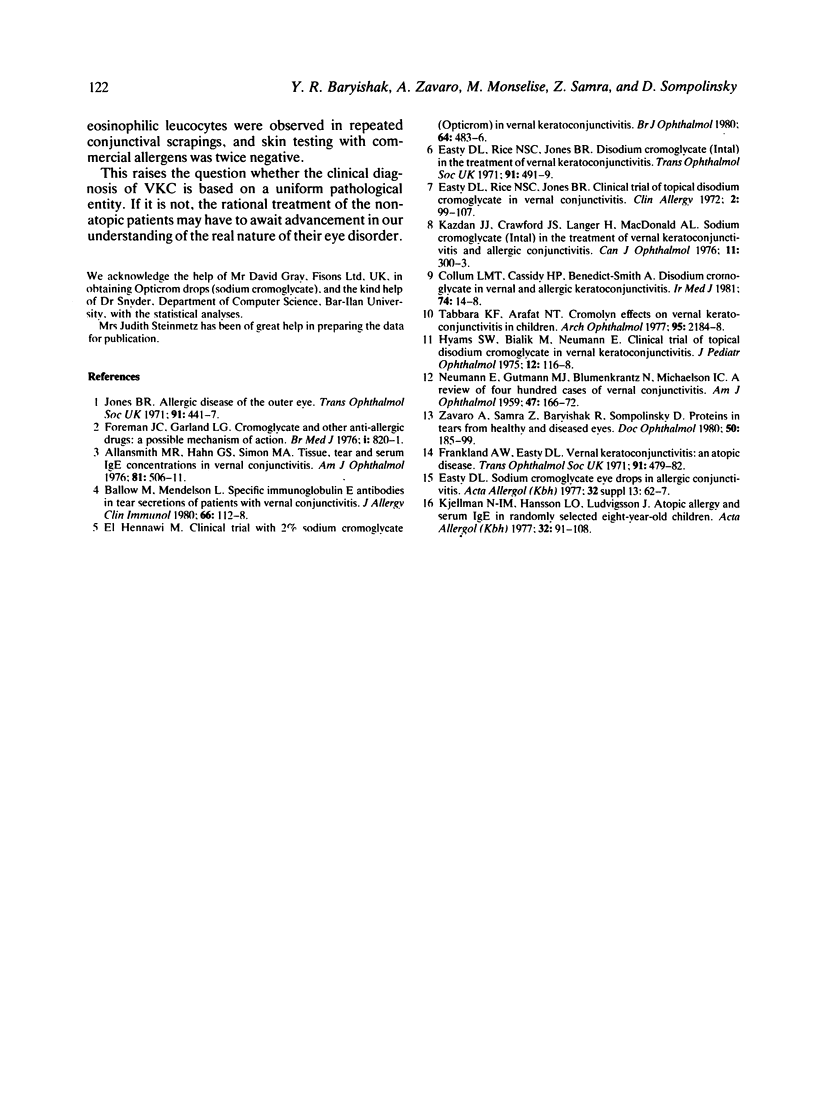
Images in this article
Selected References
These references are in PubMed. This may not be the complete list of references from this article.
- Allansmith M. R., Hahn G. S., Simon M. A. Tissue, tear, and serum IgE concentrations in vernal conjunctivitis. Am J Ophthalmol. 1976 Apr;81(4):506–511. doi: 10.1016/0002-9394(76)90310-x. [DOI] [PubMed] [Google Scholar]
- Ballow M., Mendelson L. Specific immunoglobulin E antibodies in tear secretions of patients with vernal conjunctivitis. J Allergy Clin Immunol. 1980 Aug;66(2):112–118. doi: 10.1016/0091-6749(80)90057-3. [DOI] [PubMed] [Google Scholar]
- Collum L. M., Cassidy H. P., Benedict-Smith A. Disodium cromoglycate in vernal and allergic kerato-conjunctivitis. Ir Med J. 1981 Jan;74(1):14–18. [PubMed] [Google Scholar]
- Easty D. L., Rice N. S., Jones B. R. Clinical trial of topical disodium cromoglycate in vernal kerato-conjunctivitis. Clin Allergy. 1972 Jun;2(2):99–107. doi: 10.1111/j.1365-2222.1972.tb01274.x. [DOI] [PubMed] [Google Scholar]
- Easty D., Rice N. S., Jones B. R. Disodium cromoglycate (Intal) in the treatment of vernal kerato-conjunctivitis. Trans Ophthalmol Soc U K. 1971;91:491–499. [PubMed] [Google Scholar]
- El Hennawi M. Clinical trial with 2% sodium cromoglycate (Opticrom) in vernal keratoconjunctivitis. Br J Ophthalmol. 1980 Jul;64(7):483–486. doi: 10.1136/bjo.64.7.483. [DOI] [PMC free article] [PubMed] [Google Scholar]
- Foreman J. C., Garland L. G. Cromoglycate and other antiallergic drugs: a possible mechanism of action. Br Med J. 1976 Apr 3;1(6013):820–821. doi: 10.1136/bmj.1.6013.820. [DOI] [PMC free article] [PubMed] [Google Scholar]
- Frankland A. W., Easty D. Vernal kerato-conjunctivitis: an atopic disease. Trans Ophthalmol Soc U K. 1971;91:479–482. [PubMed] [Google Scholar]
- Jones B. R. Allergic disease of the outer eye. Trans Ophthalmol Soc U K. 1971;91:441–447. [PubMed] [Google Scholar]
- Kazdan J. J., Crawford J. S., Langer H., MacDonald A. L. Sodium cromoglycate (intal) in the treatment of vernal keratoconjunctivitis and allergic conjunctivitis. Can J Ophthalmol. 1976 Oct;11(4):300–303. [PubMed] [Google Scholar]
- Kjellman N. I., Hansson L. O., Ludvigsson J. Atopic allergy and serum IgE in randomly selected eight-year-old children. Acta Allergol. 1977 Apr;32(2):91–108. doi: 10.1111/j.1398-9995.1977.tb02615.x. [DOI] [PubMed] [Google Scholar]
- NEUMANN E., GUTMANN M. J., BLUMENKRANTZ N., MICHAELSON I. C. A review of four hundred cases of vernal conjunctivitis. Am J Ophthalmol. 1959 Feb;47(2):166–172. doi: 10.1016/s0002-9394(14)76417-7. [DOI] [PubMed] [Google Scholar]
- Tabbara K. F., Arafat N. T. Cromolyn effects on vernal keratoconjunctivitis in children. Arch Ophthalmol. 1977 Dec;95(12):2184–2186. doi: 10.1001/archopht.1977.04450120090009. [DOI] [PubMed] [Google Scholar]
- Zavaro A., Samra Z., Baryishak R., Sompolinsky D. Proteins in tears from healthy and diseased eyes. Doc Ophthalmol. 1980 Dec 15;50(1):185–199. doi: 10.1007/BF00161161. [DOI] [PubMed] [Google Scholar]



